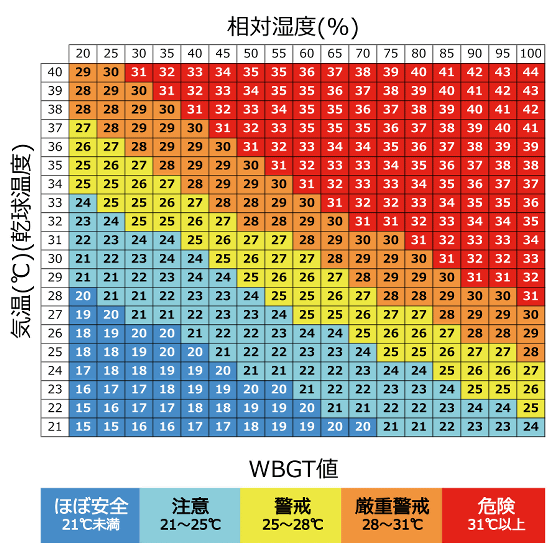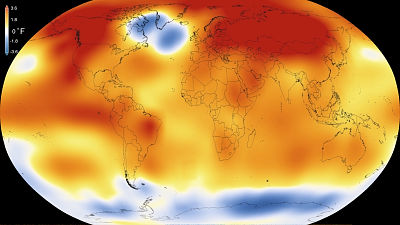Why is there a high risk of death if it is hot and humid?

In recent years, the risk of heat stroke has increased in many areas due to global warming, and the heat wave that hit Canada and the United States from the end of June 2021
Quick ???? on wet bulb temperature and why it matters for human survivability.
— Andrew Dessler (@AndrewDessler) July 4, 2021
To understand this, first some facts about the human body. To survive, humans need to keep their body temperature within a few degrees of 98 ° F.
First, human body temperature is always kept at around 36-37 degrees Celsius, and it must not be too high or too low to survive. At the same time, it is said that human metabolic function produces about 100 W (1 joule per second) of energy, and to survive, while maintaining a body temperature of 36 to 37 degrees, 100 W of heat energy is used. It must continue to be released into the surrounding environment.
At the same time, the human metabolism is generating about 100 watts of power.
— Andrew Dessler (@AndrewDessler) July 4, 2021
Put these together and it means that humans need to dump 100 watts into the environment while maintaining this 98 ° F temperature.
There are two ways to maintain body temperature: 'sensible heat transfer' that involves a change in the temperature of a substance, and 'latent heat transfer' that involves a change in the state of a substance. In sensible heat transfer, heat is dissipated using the temperature gradient between the surrounding air and the body, and when the temperature is lower than the body temperature, the heat inside the body is released to the air. In addition, when the temperature is 24 to 27 degrees Celsius, the heat energy released from the body to the air is maintained at about 100 W, so it is generally said that the temperature in this range is comfortable.
The perfect air temperature is room temperature (say, 75-80 ° F). At this temperature, normal air currents in a room will bring cool air into contact with warm skin, transferring 100 watts from the person to the room air.
— Andrew Dessler (@AndrewDessler) July 4, 2021
That's why this is the most comfortable temperature.
If the temperature is much lower than 24 degrees Celsius, too much heat energy is released from the body, allowing people to adjust the temperature of the air that comes into contact with the skin, such as by dressing. But what's worrisome is when the temperature is well above 27 degrees Celsius. When the temperature rises to about 30 degrees Celsius, normal airflow alone cannot release enough heat from the body. One way to solve this problem is to 'turn on a fan, etc.' Desler explains that when wind from an electric fan or the like creates an air flow that increases the flow of air on the surface of the skin, it can release 100 W of heat energy even at low temperature gradients.
One thing you can do in this case is turn a fan on. This increases flow of air through the room, increasing air flow over the skin. This allows your body to still dump 100 watts of power into the room despite the higher ambient temperature and lower temperature gradient.
— Andrew Dessler (@AndrewDessler) July 4, 2021
Another option is to 'sweat'. When sweat changes from a liquid to a gas (evaporates), it removes a large amount of heat by 'latent heat transfer'. It is said that the heat energy taken away when 1 g of sweat evaporates is 2250 joules, and if 0.04 g of sweat per second (2.6 g per minute) evaporates, it is possible to release 100 W of heat energy.
The other thing your body does is sweat. Sweat works because water, when it evaporates, carries a huge amount of heat away with the vapor: 2250 J / g. To dump 100 watts of power, about 0.04 g / sec of sweat needs to evaporate (2.6 g / min).
— Andrew Dessler (@AndrewDessler) July 4, 2021
If latent heat can be transferred when sweat evaporates, heat energy can be released from the body even if the temperature rises above 36 degrees Celsius and sensible heat transfer becomes impossible. Therefore, in arid areas like Phoenix, Arizona, humans can survive even if the temperature exceeds 48 degrees Celsius. Of course, temperatures of 48 degrees Celsius are harsh for humans, and Desler said, 'I'm not saying it's comfortable.'
This is known as latent heat transfer. It means that, in places that are very dry, like Phoenix, you can survive 120 ° F because you're sweating like crazy and the sweat can easily evaporate and pull lots of heat out of your body . I didn't say it was comfortable.
— Andrew Dessler (@AndrewDessler) July 4, 2021
After understanding that there are two mechanisms for the body to release heat energy, sensible heat transfer and latent heat transfer, let's consider the situation where the temperature is 36.7 degrees Celsius and the humidity is 100%. When the temperature is 36.7 degrees Celsius, sensible heat transfer cannot be used because there is no temperature gradient with body temperature, and when the humidity is 100%, sweat does not evaporate and latent heat transfer cannot be used.
Now let's consider a hypothetical: the ambient conditions are 98 ° F and 100% relative humidity. Because the temperature is 98 ° F, the same as your body, there is no temperature gradient between your body and the outside, so no sensible heat transfer ..
— Andrew Dessler (@AndrewDessler) July 4, 2021
In that case, since the body has no way to release heat energy, the heat energy stays in the body as it is, and the body temperature gradually rises.
And because the relative humidity is 100%, you can't evaporate any sweat. So there's no latent heat transfer. With no way to dump the 100 watts of heat, the energy accumulates in your body and, via the first law of thermodynamics, your body temperature increases.
— Andrew Dessler (@AndrewDessler) July 4, 2021
If this situation continues, Desler points out that the body temperature will rise too high and you will die. Therefore, the risk of death from heat waves needs to be considered not only for the rise in temperature but also for the rise in humidity. The 'wet-bulb globe temperature ' is useful in considering the risk of death due to the inability to release heat energy.
This situation (98 ° F and 100% RH) will cause your body temperature to increase enough that it will kill you.
— Andrew Dessler (@AndrewDessler) July 4, 2021
This is where wet-bulb temperature comes in. It is a combined measure of temperature and humidity and it tells you how dangerous the combination is.
Wet-bulb globe temperature is an index developed by the US Marine Corps to determine the risk of activity in a hot environment, and is called the Heat Index (WBGT) by the Ministry of the Environment of Japan. The following image is a graph to easily calculate the heat index from relative humidity and temperature based on '(PDF file) Heat stroke prevention guideline ver.3 in daily life ' published by the Japanese Society of Biometeorology. When the heat index exceeds '31', it is considered 'dangerous', and in hot and humid Japan, it is not uncommon to enter the 'dangerous' area in the summer. From 2021, the Japan Meteorological Agency and the Ministry of the Environment are planning to announce 'heat stroke warning alerts' based on the heat index nationwide.

'It's not good to have a value in the late 20s (heat index). If the value is around 35, which is close to body temperature, it will be difficult to survive, and if it is higher than that, you will die.' Climate change is expected to increase the number of areas where the summer heat index exceeds 30 in the future, but he argued that it is necessary to consider whether such areas are really 'livable'.
Values in the upper 20s are bad. Values close to your body temperature (ie, 35 ° C) are not survivable. If you are exposed to those latter conditions, you will die.
— Andrew Dessler (@AndrewDessler) July 4, 2021
Related Posts:
in Science, Posted by log1h_ik







